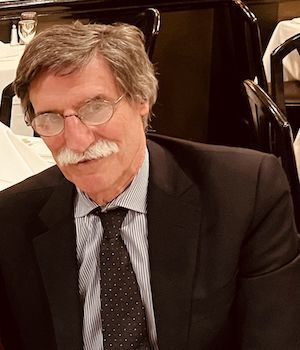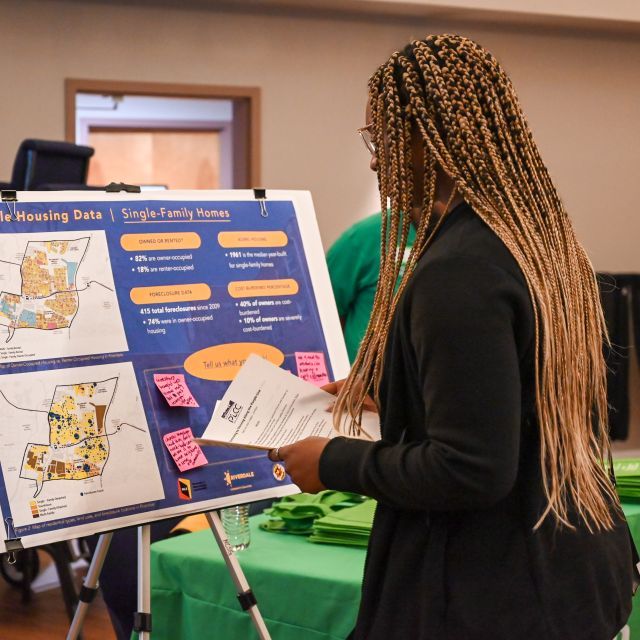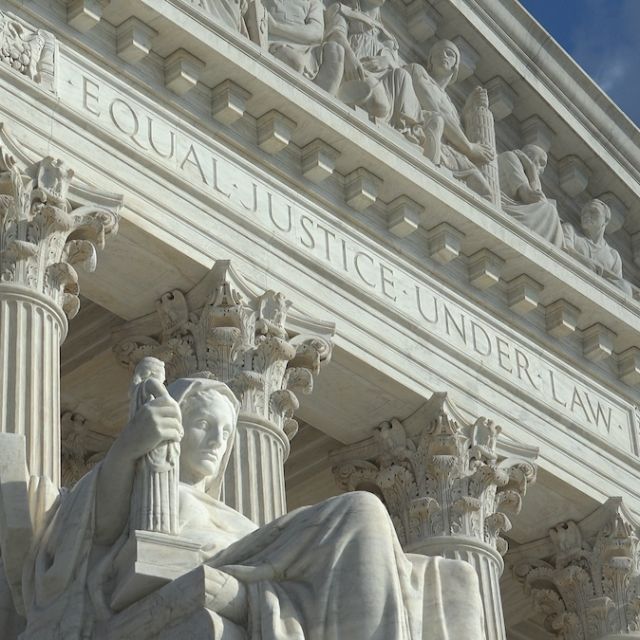In 2018, Enterprise challenged the San Francisco Bay Area to think about a regional approach to addressing the housing crisis at scale. A report by Northern California Vice President and market leader Heather Hood and Senior Director Geeta Rao called for creating a regional housing entity equipped to raise and deploy significant funding across the nine counties.
The CASA Compact, a plan to address the region’s housing affordability challenges, elevated the concept. Then, 40 Bay Area housing leaders explored the idea further on a 2018 study tour of the New York City’s Housing Development Corporation (NYC HDC). Former Assemblymember David Chiu authored Assembly Bill 1487 (2019) to create the Bay Area Housing Finance Authority (BAHFA), co-sponsored by Enterprise and the Non-Profit Housing Association of Northern California.
Six years later, through the collaboration and perseverance of a broad coalition of stakeholders, BAHFA is poised to launch transformational change. Veteran housing experts now staff BAHFA, and pilot programs are up and running. In 2023, Assembly Bill 1319, authored by Assemblymember Buffy Wicks, expanded BAHFA’s suite of tools and authorities. Now, Bay Area voters will vote to capitalize BAHFA with a $10-20 billion, nine-county Bay Area affordable housing bond on the November 2024 ballot.
We spoke with Marc Jahr, former president of NYC HDC and currently a senior advisor with Forsyth Street Advisors, and Geeta Rao about the NYC HDC model and the opportunities BAHFA can unlock following the successful passage of a bond.
What inspired the Northern California team to help envision and create BAHFA, and what did NY HDC offer as a model?

Geeta Rao (GTR): The Bay Area has a regional affordable housing and homelessness crisis, but we do not have any regional tools or solutions. In fact, for far too long, we’ve expected each of the 101 cities and nine counties in the Bay Area to solve the housing crisis on their own. This patchwork approach hasn’t worked for us, especially after the dissolution of redevelopment agencies.
In researching best practices from across the country, we were inspired by so many great models that embraced collaboration, leadership, and innovation. The one that really stood out was NYC HDC. It reminded us that you need people with deep affordable housing finance expertise and money (a lot of it!) and to address big problems at scale.
Case In point: Our latest pipeline research, conducted in partnership with BAHFA, shows there are more than 40,000 affordable homes in pre-development in the Bay Area awaiting $9.7 billion in subsidy to move towards construction. (More details on this research will be released next month.)
NYC HDC also caught our attention because of its self-sustaining model. Through its lending programs and bonding it has generated billions of dollars. These programs allow NYC HDC to reinvest hundreds of millions of dollars back into affordable housing developments each year.
Marc, can you tell us more about the NYC HDC model and what success has looked like?

Housing Development Corporation and currently
a senior advisor with Forsyth Street Advisors
Marc Jahr (MJ): NYC HDC is, in a sense, a public bank for the purposes of promoting the creation and preservation of affordable rental housing throughout New York City. It is self-sufficient. It doesn’t rely upon either the city or state government for support. It relies upon a variety of sources of income to fund all of its operations.
You can summarize this financial activity in a simple acronym, FISS — fees, investments and income, spread, and securitizations. However, unlike a private bank, rather than using its net income (profit) to pay dividends to shareholders and provide bonuses to its senior executives and other staff, it reinvests its net income in more affordable housing. It is a bank with a distinctly public purpose. And by the measure of assets, it is among the 100 largest banks in the United States.
The turning point for NYC HDC occurred in 2003 when the Bloomberg Administration decided that it had an extraordinarily valuable and underused asset on its hands. Since this time, through NYC HDC’s activities – most notably through its Open Resolution – it has generated sufficient income to not only cover all of its expenses – paying its bondholders, its staff, and operating expenses – but also to provide over $3.8 billion in subsidy to the affordable housing developments it finances. And by requiring developers to pay interest on their loans, it ensures that the public is fairly paid for the inexpensive capital it provides.
In 2023 alone, NYC HDC provided over $249 million in inexpensive subsidy loans to affordable housing deals. To put that in perspective, the major federal capital program for affordable housing, HOME, provided New York City with $80.5 million that same year. All this has allowed NYC HDC to finance more than 210,000 new affordable homes since 2003, helping to meet the housing needs of low-, extremely low-, and moderate-income families.
Through BAHFA, how can the Bay Area use strategies tested in New York City? Are there any lessons learned that BAHFA should keep in mind?
MJ: There are no magic bullets in affordable housing and community development. State and local governments must take the long view and be committed to creating and preserving affordable housing for all their citizens. But the first lesson to take away from NYC HDC’s experience has been the importance of collaboration – and to approach collaboration with ambition, tenacity, and patience. Examples of the key collaboration that has fueled NYC HDC’s extraordinary growth over the past two decades include:
- The New York City Department of Housing Preservation and Development (HPD) is a core partner, working closely with NYC HDC to meet the city’s housing goals. The chair of NYC HDC’s board is the HPD commissioner;
- New York City Housing Authority (NYCHA), to provide it with the capital it desperately needs to rehabilitate its deteriorated stock of apartment buildings;
- Department of Homeless Services (DHS) is increasingly a partner as the city grapples with serving the housing needs of its homeless and new migrant populations;
- Financial institutions like investment banks, bank lenders, Fannie Mae and Freddie Mac, and the Federal Home Loan Bank board to raise the capital it needs to lend for affordable housing;
- The state government is also a core partner, and NYC HDC even has two gubernatorial representatives on its board. It relies heavily on the state to provide it with a reasonable share of the tax-exempt private activity volume cap, which is a prerequisite for federal 4% Low-Income Housing Tax Credits;
- The federal government is another long-standing partner, as NYC HDC has always had a robust public policy agenda, working closely with federal elected officials to secure legislative wins and large-scale resources for New York;
- Affordable housing developers who make the new affordable developments a reality on the ground.
NYC HDC’s relationship with the City of New York and other funding agencies can serve as an excellent model for collaboration between BAHFA and the counties and municipalities of the Bay Area. By collaborating with local jurisdictions to finance affordable housing, both BAHFA and local jurisdictions can share capital resources, organizational infrastructure, skilled staff, intellectual capital, and risk, magnifying their impact beyond what each could achieve on their own.
A second lesson is the need for flexibility and a diversity of products to meet the varied affordable housing needs of the region. NYC HDC issues tax-exempt and taxable bonds of varied stripes and it lends for a variety of developments. It also provides guarantees for a range of innovative developments. Additionally, it has its own “captive” long-term mortgage insurer, the New York City Residential Mortgage Insurance Corporation (REMIC.)
Viewed through the lens of my own experience with NYC HDC, I’m impressed by how far along BAHFA is already and how promising its future is. California and the Bay Area have been leaders in the creation of affordable housing, and the passage of the proposed bond will turbo-charge that ascent and create terrific, new opportunities for the Bay Area.
To read more about how the NYC HDC model has informed BAHFA’s design and planning, you can find the BAHFA Business Plan here (Chapter 4).
It took decades for NYC HDC to reach the robust capacity it has today. What are the milestones for BAHFA that will help the Bay Area grow in that direction?
GTR: I am proud to say that we have already reached significant milestones with BAHFA in a relatively short amount of time. It is amazing to see how quickly BAHFA went from idea to reality! Since passing the enabling legislation and securing $20 million in seed funding from the state in 2020, BAHFA has not wasted a minute pursuing its purpose.
BAHFA hired its inaugural Director Kate Hartley, who quickly hired a staff and launched five pilot programs. Already BAHFA has launched:
- Doorway, an online housing application portal serving Bay Area’s nine counties, made possible by generous assistance from Google.org
- The Welfare Tax Exemption Preservation Program, which has already assisted six developments in preserving the affordability of nearly 500 units and has prevented displacement of hundreds of tenants; another 400 units are in the pipeline and will likely close and secure long-term affordability shortly
- The Bay Area Affordable Housing Pipeline, completed in collaboration with Enterprise, found that there are 433 developments in pre-development totaling 40,896 affordable homes
- Bay Area Eviction Study has launched to better understand causes, household characteristics, and ancillary conditions of evictions to develop prevention strategies
- A $5 million Rental Subsidy Program to assist extremely low-income seniors at risk of homelessness
This early work is building BAHFA’s capacity and the momentum for regional solutions. We’re already on our way toward programs like we see in New York, but BAHFA needs a significant influx of funding in order to launch programs at a scale that can put BAHFA on the path to self-sufficiency. The regional affordable housing bond will be this source of funding.
What’s next for the regional housing bond and how can people support the effort?
GTR: The bond is poised to go before voters on the November 2024 ballot, and the impact of this bond would be incredible. A $20 billion bond is estimated to produce and preserve upward of 72,000 affordable homes in communities across the region.
By design, this bond can support housing that meets local needs – including new affordable apartments near transit, affordable homeownership, preservation through community land trusts, senior housing, and housing and support for our neighbors experiencing homelessness and housing insecurity who are disproportionately Black and indigenous.
Over the lifetime of these developments, nearly 800,000 low-income households will be served. The construction of these homes will also create 46,000 jobs annually and generate over a billion dollars in state and local taxes as well as leverage an additional $61 billion for affordable housing through federal, state, and private funding sources.
Our collective job is to ensure the measure’s success in November. First, if you want to show your support, endorse the bond as an individual and as an organization. Then, reach out to your local elected officials and community organizations and ask them to support the measure. You can see the list of current supporters here.
To engage further, consider joining the Bay Area Housing for All (BAHA) Coalition, which Enterprise is proud to co-lead. BAHA is a fast-growing, large coalition in support of this measure. With over 60 members, the BAHA coalition includes non-profit, philanthropic, business, and public sector partners working at the intersection of housing, racial equity, climate, transportation, and quality of life.
Finally, as we work toward November, let’s all hold tight to the vision set forth by BAHFA that, “When we look ahead 20 or 30 years we see a Bay Area that works for all…we see a region not held back by crushing affordability and homelessness crises, [a Bay Area] able to rise to other challenges — from climate change to racial injustice — while ensuring our region can meet the needs and seize the opportunities of a dynamic future.”



